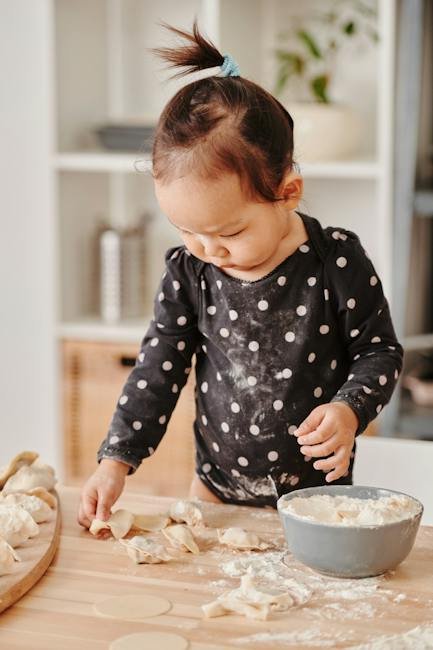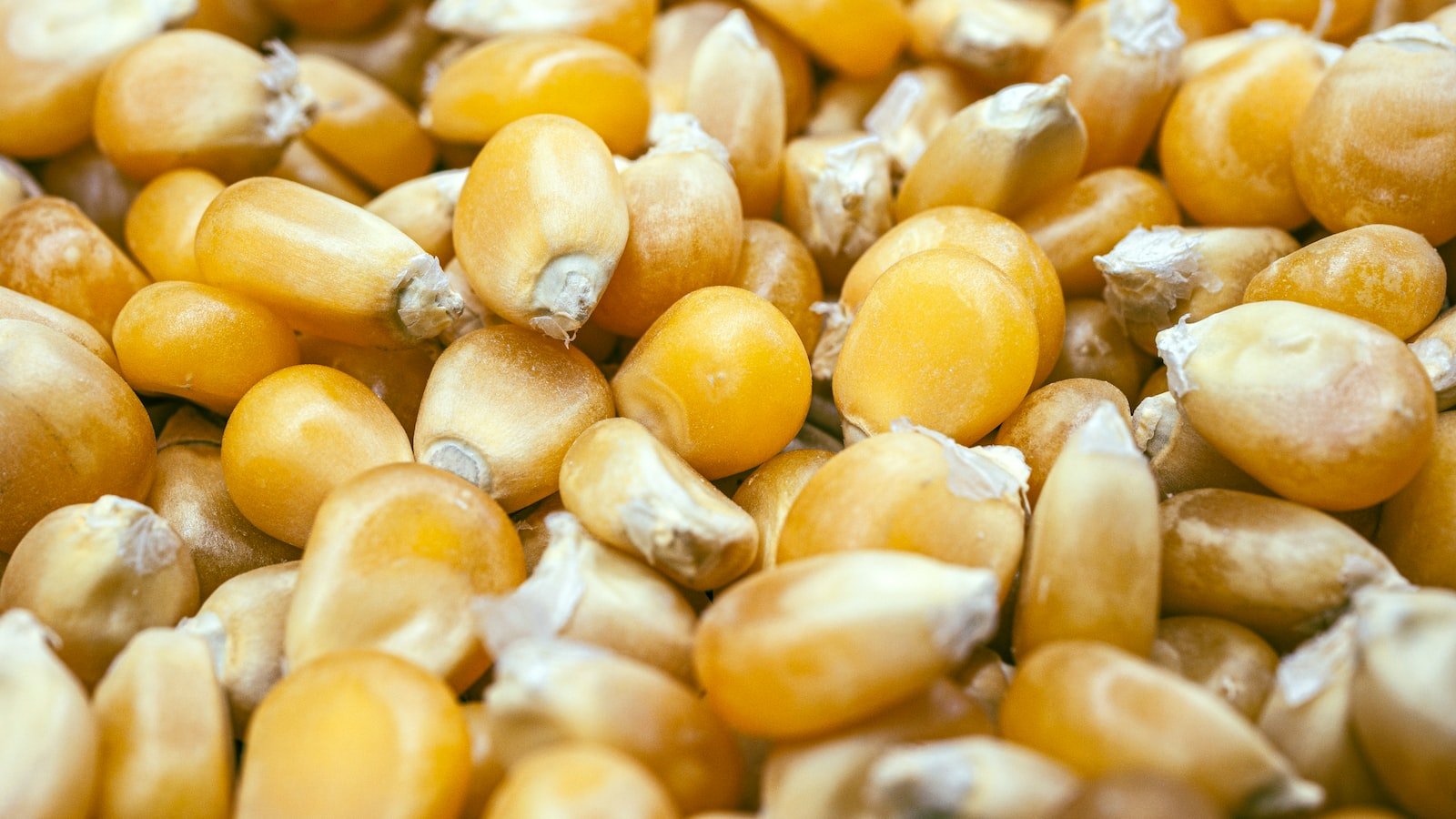Are you a new parent looking to nourish your precious little one with homemade goodness? Well, look no further! Making your own baby food is not just a sustainable choice, but also an incredibly rewarding and fulfilling experience. Imagine the satisfaction of knowing exactly what goes into your baby’s meals, free from artificial ingredients and unnecessary additives. In this article, we’ll guide you through the process, step by step, helping you create nutritious and delicious meals that your baby will absolutely adore. So get ready to embark on a journey of culinary exploration, because preparing homemade baby food has never been so easy, enjoyable, and eco-friendly!
Table of Contents
- Introduction: Exploring the Benefits of Homemade Baby Food
- The Importance of Choosing Organic and Locally Sourced Ingredients
- Step-by-Step Guide: How to Prepare Nutrient-Rich Baby Food at Home
- Ensuring Safe Storage and Batch Preparation for Busy Parents
- Sustainable Tips: Repurposing Leftovers and Reducing Waste in Baby Food Making
- Q&A
- To Conclude

Introduction: Exploring the Benefits of Homemade Baby Food
Are you a new parent looking for the best nutrition for your little one? If so, you’re in the right place! In this post, we will be exploring the numerous benefits of homemade baby food.
When it comes to nourishing your baby, nothing beats the freshness and quality of homemade meals. By preparing your own baby food, you have complete control over the ingredients, ensuring that your little bundle of joy receives the most nutritious and wholesome meals possible.
Here are some key advantages of making your own baby food:
- Customization: Homemade baby food allows you to tailor meals to your baby’s specific tastes and dietary needs. Whether your little one prefers pureed carrots or mashed bananas, you can create a diverse menu that caters to their unique preferences.
- Freshness: By making baby food at home, you can use fresh, high-quality ingredients and avoid additives or preservatives commonly found in store-bought options. This ensures that your baby receives the maximum nutrients and flavors from the ingredients.
- Cost-effective: Making your own baby food can be a great way to save money in the long run. Baby food can be quite expensive, especially if you opt for organic or premium varieties. By whipping up homemade meals, you can make a larger quantity for a lower cost, helping you stick to your budget without compromising on quality.
So why settle for store-bought options when you can provide your little one with the goodness of homemade baby food? In the upcoming sections, we will delve deeper into specific recipes, techniques, and tips to make your baby’s food prep journey enjoyable and stress-free. Get ready to embark on a delicious and nutritious adventure!

The Importance of Choosing Organic and Locally Sourced Ingredients
When it comes to our food choices, the importance of selecting organic and locally sourced ingredients cannot be emphasized enough. Not only do these choices have a positive impact on our health, but they also contribute to the well-being of local communities and the environment.
Opting for organic ingredients means choosing produce that is free from harmful pesticides, synthetic fertilizers, and genetically modified organisms (GMOs). By doing so, we decrease our exposure to potential toxins and promote a more sustainable farming method. Not to mention, organic farming supports biodiversity and helps to preserve and protect natural resources.
Additionally, selecting locally sourced ingredients can have a transformative effect on both the economy and the environment. By supporting local farmers and businesses, we stimulate the local economy, ensuring that our money stays within the community. Furthermore, since locally sourced ingredients require less transportation, they have a smaller carbon footprint, reducing greenhouse gas emissions and promoting a more sustainable food system.
Choosing organic and locally sourced ingredients is not only a matter of personal choice but also a responsibility towards our own well-being and the planet we inhabit. By making conscious decisions about what we consume, we contribute to a healthier and more sustainable future for ourselves and generations to come.

Step-by-Step Guide: How to Prepare Nutrient-Rich Baby Food at Home
Preparing nutritious homemade baby food is easier than you might think. With a little planning and some fresh ingredients, you can ensure that your little one gets the best start when it comes to their nutritional needs. Follow this step-by-step guide for a hassle-free experience:
Gather the ingredients:
- Fresh fruits or vegetables (organic if possible)
- Meats or poultry (if desired and age-appropriate)
- Whole grains or legumes
- Water or breast milk/formula to thin the food
Wash and chop:
Thoroughly wash all fruits and vegetables before using them. Peel and chop them into small, manageable pieces. If using meats or poultry, trim any excess fat and cut into small chunks.
Cook the ingredients:
Steam or boil the fruits, vegetables, meats, or poultry until they are soft and tender. This helps retain their natural flavors and nutrients.
Puree and/or mash:
Transfer the cooked ingredients to a blender or food processor. Add water or breast milk/formula to achieve the desired consistency. Blend or process until smooth. For older babies, you can leave a little texture by mashing with a fork or spoon.
Store and serve:
Divide the baby food into small portions and store them in airtight containers or ice cube trays. Label and freeze any portions you won’t be using immediately. Thaw and reheat the food as needed, ensuring it is warm but not hot, before serving.
Preparing nutrient-rich baby food at home allows you to have complete control over the ingredients and ensure your baby receives a wholesome and balanced diet. With this simple step-by-step guide, you can enjoy the satisfaction of providing your little one with the very best start in life.
Ensuring Safe Storage and Batch Preparation for Busy Parents
As parents, we understand that ensuring the safety of our little ones is our top priority. With busy schedules, it can be challenging to find the time to prepare and store meals efficiently. To help you navigate this, we have compiled some tips and tricks to ensure safe storage and batch preparation, making mealtimes a breeze for you and your family.
- Invest in reliable storage containers: Look for BPA-free, airtight containers that are microwave and dishwasher safe. Sturdy containers keep food fresh for longer, prevent leaks, and eliminate the risk of harmful chemicals seeping into your child’s meals.
- Organize your pantry: Creating a well-organized pantry will save you time and effort. Label shelves for different food categories and ensure items are within reach. This not only streamlines the batch preparation process but also helps you keep track of expiration dates and avoid wastage.
- Follow safe food handling practices: Always wash your hands thoroughly before handling food and use separate cutting boards for different ingredients, especially when batch preparing. This prevents cross-contamination and reduces the chances of foodborne illnesses.
- Utilize time-saving kitchen tools: Invest in time-saving kitchen gadgets like food processors and slow cookers that can assist you in preparing large batches of food quickly and effortlessly. These tools not only save time but also ensure that wholesome meals are readily available even on the busiest of days.
By implementing these strategies, you can ensure that your child’s meals are prepared with love, care, and most importantly, safety. With a little bit of planning and organization, providing nutritious and delicious meals for your family will become a stress-free part of your routine.
Sustainable Tips: Repurposing Leftovers and Reducing Waste in Baby Food Making
Less waste, more flavor: When it comes to making baby food, repurposing leftovers is a sustainable choice that not only reduces waste but also adds exciting flavors to your little one’s meals. Instead of letting those unused fruits and vegetables go to waste, try incorporating them into your baby food recipes. Leftover steamed carrots can be pureed and mixed with sweet potatoes for a vibrant and nutritious puree. Similarly, blending together ripe bananas and leftover cooked oatmeal creates a delicious and wholesome snack.
Get creative with combinations: By repurposing leftovers, you have the opportunity to experiment with new flavor combinations for your baby’s meals. Mix leftover roasted chicken with cooked quinoa and steamed broccoli for a protein-packed puree. For a twist on traditional favorites, combine leftover avocado with cooked peas and a squeeze of lemon juice for a zesty and creamy puree. Be bold and have fun discovering unique taste sensations that expand your little one’s palate.
Plan and store smart: To reduce waste and make the most out of your leftovers, it’s essential to plan and store them properly. Invest in reusable food storage containers to keep any extra portions fresh and organized. Label and date each container, ensuring that you prioritize using the oldest leftovers first. Additionally, consider freezing leftover purees in ice cube trays for convenient portion sizes. Thaw only what you need and mix and match flavors as desired to provide variety in your baby’s meals.
Q&A
What are the benefits of making your own baby food?
Making your own baby food allows you to control the ingredients and ensure that your baby is consuming fresh, organic, and chemical-free food. It also reduces waste from packaging and can be a more cost-effective option in the long run.
How can making your own baby food be a sustainable choice?
By making your own baby food, you can minimize the carbon footprint associated with commercial baby food production, transportation, and packaging. Additionally, using locally sourced, seasonal ingredients can further reduce the environmental impact.
Is it difficult to make your own baby food?
Not at all! Making your own baby food can be as simple as steaming or boiling fruits and vegetables, then pureeing them to the desired consistency. You can find numerous easy-to-follow recipes and tips online to guide you through the process.
At what age can I start making baby food at home?
You can start making baby food at home as soon as your baby is ready to start solids, typically around 6 months of age. However, it’s always essential to consult with your pediatrician before introducing new foods to your baby.
What equipment do I need to make my own baby food?
To make your own baby food, you’ll need a blender or food processor to puree the ingredients. Additionally, having some baby food storage containers, ice cube trays, or reusable pouches will be helpful for portioning and storing the food.
Can I freeze homemade baby food?
Absolutely! Freezing is an excellent way to preserve homemade baby food without the need for preservatives. Portion the pureed food into ice cube trays, freeze them, then transfer the frozen cubes into a sealed container or bag. This way, you can easily thaw and use them as needed.
What are some easy and nutritious recipes to start with?
Begin with simple single-ingredient purees like sweet potatoes, carrots, or peas. As your baby gets older and more comfortable with solids, you can introduce combinations like avocado and banana, apple and spinach, or lentils and rice, providing a variety of tastes and nutrients.
Are there any safety guidelines I should follow when making baby food at home?
Yes, it’s essential to follow proper hygiene practices while making baby food. Wash your hands thoroughly, clean all utensils and equipment, and ensure the ingredients are fresh and safe. Avoid using honey or any ingredients that may pose a choking hazard, such as whole nuts or large chunks of food.
Is it necessary to buy organic ingredients for homemade baby food?
While organic ingredients are preferred, they are not mandatory for making homemade baby food. It’s essential to wash and peel the ingredients, removing any dirt or pesticide residue. Additionally, opt for locally sourced produce when possible, supporting sustainable and environmentally friendly farming practices.
Is making baby food at home more cost-effective than buying commercial baby food?
In most cases, making baby food at home can be more cost-effective compared to buying commercially packaged options. By purchasing fresh ingredients in bulk, you can prepare a larger quantity of baby food at a fraction of the cost. Additionally, it eliminates the need for individual pre-packaged portions and reduces waste.
To Conclude
As we bid adieu to our guide on how to make your own baby food, we hope you’ve been inspired to embark on this sustainable culinary journey for your little one. By taking matters into your own hands, you have the power to nourish your baby with the purest, freshest ingredients while contributing to a healthier planet.
As your tiny taste explorer grows, let their palate flourish with a rainbow of flavors and textures you can customize, ensuring a delightful mealtime experience every day. Embrace the joy of experimenting in your kitchen, armed with the knowledge that what you create nurtures their growth and development.
Remember, the benefits of making your own baby food are manifold. Not only do you have control over what goes into each dish, steering clear of harmful additives or preservatives, but you also reduce waste by eliminating unnecessary packaging. With a dash of creativity and a pinch of love, you can create nutritious concoctions that leave both their tummies and the environment satiated.
From mashing, puréeing, and blending, you are now equipped with the skills to transform everyday fruits, vegetables, grains, and proteins into delightful culinary creations. Whether it’s sweet potatoes mashed to perfection, or a medley of colorful fruits blended into a vibrant puree, you’re well on your way to becoming a culinary superhero for your little one.
As you embark on this wholesome journey of providing your baby with the best start in life, remember to follow your instincts, and embrace the mantra of sustainability. Let us celebrate this mindful choice that not only nourishes our children but also creates a foundation of earth-friendly habits.
By diving into the magical world of homemade baby food, you are not only feeding their tiny bodies but also shaping their understanding of conscious living. So, gather your apron, prepare your kitchen to be a canvas, and with each delicious bite, revel in the knowledge that you are creating a sustainable future, one spoonful at a time.
Farewell, dear readers, as you venture forth to savor the joys of creating homemade baby food. May your journey be filled with love, laughter, and sustainable choices. Bon appétit!
As an affiliate, my content may feature links to products I personally use and recommend. By taking action, like subscribing or making a purchase, you’ll be supporting my work and fueling my taco cravings at the same time. Win-win, right?
Want to read more? Check out our Affiliate Disclosure page.